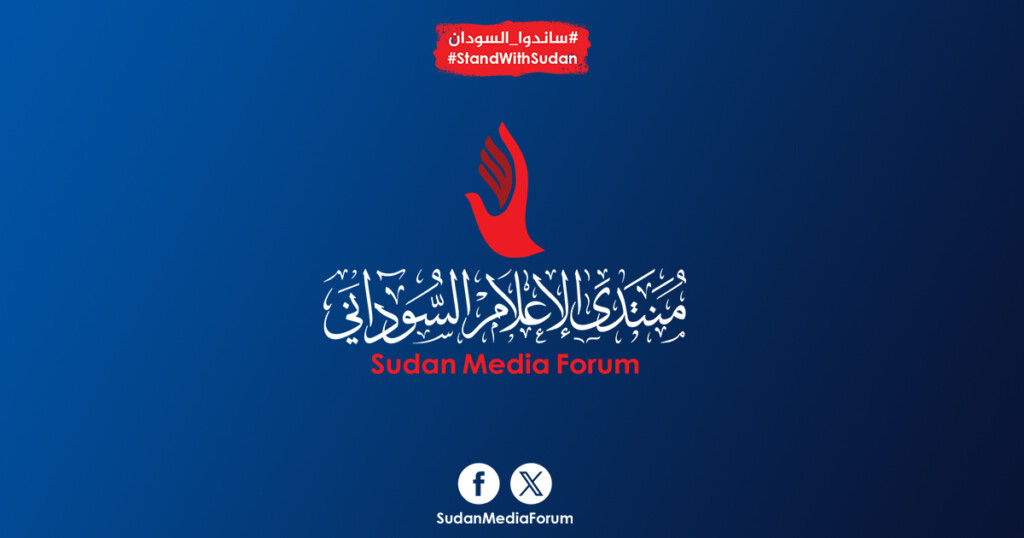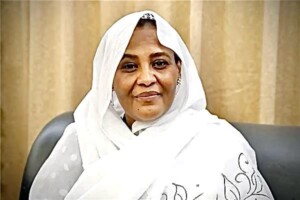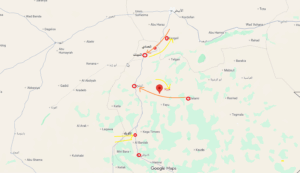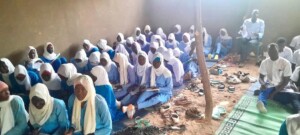Life in spite of the guns… Omdurman resists war to retain capital’s lustre

A banner on the wall of a house in Omdurman announces the resident's return, in spite of the fighting in some parts of the city (Photo: Sudan Media Forum)
Sudan Media Forum Joint Editorial Room – September 22, 2024
Prepared and Edited by: Sudan Tribune
While war prevails in Karari, in the north of Sudan’s second city of Omdurman, the old neighbourhoods of Omdurman in the centre are the only spot in Khartoum state that still enjoys some of the former lustre of the capital of Sudan. The war that erupted between the Sudanese army and the Rapid Support Forces on April 15, 2023, destroyed the Sudanese capital, and turned the three cities of Khartoum into theaters of military operations, especially from the expansion of the RSF’s control. But the army-controlled Karari locality in the far north of Omdurman, is still vibrant, especially after the army’s control expanded to the south and rapid support was removed from the old neighborhoods of Omdurman following a fierce battle last March.
The old city’s neighbourhoods such as Wad Nubawi, Beit El Mal, El Mulazemin, Banat, Morada, Abbasiya, Abrof, Wad El Banna and El Gamayer are slowly recovering, but life is evident in all its hustle and bustle in the northern suburbs of El Sawra and the northern countryside of Karari locality.

The life of the Sudanese in Omdurman was marked by the manifestations and tragedies of the war, in that the city, despite its overcrowding of civilians, is still subjected to artillery shelling, and the spread of army posts in the roads and the sounds of cannons and light weapons remain a feature of the region.
Game of death and chance
The support forces direct their launchers and artillery fire towards Omdurman from the areas under their control along the eastern bank of the Nile River, starting from El Mogran and Tuti Island in Khartoum, passing through the neighborhoods of Khartoum North, and ending with the northern countryside of Khartoum North in El Jeili and Qari.

Accordingly, the old Omdurman, from its far south in Bant and Mohandessin, passing through the suburb of El Thawra to the northern countryside of Omdurman in El Sourrab and El Jazeera Islang, is subjected to repeated artillery shelling.
The RSF also targets from areas under its control west of Omdurman in parts of Um Bidda, army-controlled areas in the western neighborhoods of the suburb of El Thawra.
According to an official in Khartoum state, which is based in Karary locality in Omdurman, local authorities do not have a count of deaths and injuries from RSF artillery shelling on Omdurman since the war began.
The official, who preferred not to be named because he was not authorized to speak to the press, said the frequency of shelling had recently increased, with the number of casualties increasing, including deaths, injuries and destruction of homes and public facilities.
The Resistance Committees, youth entities that led the demonstrations against the coup of army commander Abdel Fattah El Burhan on October 25, 2021, were responsible for issuing statements on the victims of the bombing.
However, as the bombing finally increased, local authorities began to pay attention to the need to issue official statements to the Ministry of Health in Khartoum state about the deaths and injuries caused by the shelling.

In the latest intensive artillery shelling of the Rapid Support Forces last Wednesday, September 18, the Ministry of Health in Khartoum state reported two deaths, including a child, and10 injured who were transferred to several hospitals, due to artillery shells that fell in the neighborhoods of El Manara and El Thawra in Karary locality.
The RSF artillery shelling, often in the context of-for-tat shelling with the army towards Khartoum North, has targeted densely populated civilian neighbourhoods in Omdurman, leaving children and women at risk of death or loss of limbs.
In addition to its residents, the neighborhoods of Omdurman are sheltering residents of Khartoum, Khartoum Bahri and the locality of Um Bidda west of Omdurman, who preferred to live with the shelling and military manifestations in Karary locality.

Life with war
Residents in Omdurman are resisting fear and are forced to survive the war and the declining labor market, as leaving for safe states or outside Sudan is an option for many.
Instead of the main Omdurman markets such as the Omdurman market, the popular market and the Libya market, which were either destroyed, looted or burned during the war, they arose
Markets and havens for residents on the main roads in the suburb of El Thawra, especially on the streets of El Wadi, El Nass and El Shingueti.
Adel Khalafallah, spokesman for the Arab Socialist Baath Party and former member of the Economic Committee of the Forces of Freedom and Change, said the war deliberately destroyed industrial and agricultural production bases and institutions, companies, workshops and stores, in addition to looting and vandalism that affected private and public property, markets, banks and service facilities for education, health, electricity and water.

Khalafallah added to Sudan Tribune that a large segment of the residents of Karary locality found themselves without sources of income and the dominance of commercial activity – total and retail – and the associated chains of services and intermediary works such as transportation, storage, distribution and display in front of shops and on the sides of safer roads, since Karary is the only outlet to the capital linked to the production areas in the northern states and the Nile River.
According to Khalafalla, this resulted in the growth of markets such as the Sabreen market and the facilities along El Wadi Street from the center of Omdurman to the far north of Shamab Karari, which contributed to attracting trade workers and the entry of other professions into the field of trade after losing their jobs and stopping their salaries.
Khalaf Allah, who is also currently trading in building materials, points to the steady increase in gold buying and selling signs, where about 30 shops and companies can be counted on El Wadi Street as an example in a distance of no more than two kilometers.
It is noteworthy that these areas are where a large segment of middlemen grew up in search of livelihood to cope with the large imbalance between income and the price levels of goods and services, while a large sector depends on the remittances of their relatives from outside the country.

Adel Khalaf Allah points to the booming real estate sector, car trade and transportation, noting that most of its practitioners are from the military and security sector.
But the man stresses that in general, markets are suffering from a recession manifested by growing supply as demand contracts, including food markets, due to the erosion of purchasing power due to the fall of the pound against the dollar and the decline in remittances abroad as the war continues.
He warns that unless the war stops, the economic and social deterioration will continue and its repercussions on people’s lives, health, education and businesses.
He points to another challenge represented in the behavior of localities in collecting and chasing vendors, who lost their markets and shops or practiced alternative professions with the same methods and tools before the destruction, in addition to revenue institutions such as taxes, zakat, civil defense, the Ministry of Health, and standards and standards, which impose fees that are not commensurate with the reality of traders and without corresponding services.

Survival and return
Despite the apparent manifestations of war on the features of Omdurman, the provision and improvement of water, electricity and security services remains an enforceable challenge in order to stimulate the survival and return of the population.
The old neighbourhoods of Omdurman are witnessing a slow return of residents, some of whom are residents of other areas such as North Khartoum North, who had to flee RSF violations to Omdurman.
F.H., a resident of Khartoum North’s Halfaya El Muluk neighbourhood, told Sudan Tribune that since the war she has been displaced several times, to Gezira State, then to Faki Hashim, north of Khartoum North, from where she crossed the Nile with her family to Omdurman, where they live in a family-friend’s house in the Wad El Banna neighborhood in the city center.
FH complains of the large number of mosquitoes and disease vectors that have caused outbreaks of unknown fevers. “We live with the sounds of gunfire and movement restrictions in the neighborhood, where movement is still limited and stops shortly after sunset,” she said.
According to Sudan Tribune’s correspondent, maintenance work is still underway on power grid lines and water stations, but the scale of the destruction in areas such as the ancient Wad Nubawi neighborhood makes it extremely difficult for residents to return at the moment.
In terms of providing security, the police began this September to deploy mounted and foot patrols in the Karary locality, north of Omdurman, to reduce looting at gunpoint, which resulted in some murders.
In the old Omdurman districts of Omdurman locality, police said earlier that sections had begun receiving reports and criminal work had begun to be reopened in areas retaken by the army from the Rapid Support Forces.

According to the police press office, the local police of Omdurman rehabilitated and maintained seven criminal sections (northern Omdurman – market – middle – southern – Abu Saad North – Kabjab – Doha), and these sections are ready to perform their tasks in terms of manpower and other work aids to provide security services and direct the opening of reports and receive complaints in addition to the process of securing neighborhoods and markets through the deployment of troops with anchors and the implementation of campaigns to prevent crime.
Maj. Gen. Saleh Hassan Bakhit, director of the Omdurman local police, said the prosecution has also begun its duties and confirmed the readiness of the police forces to secure Omdurman neighbourhoods, markets and important sites in preparation for the return of citizens to their homes.
He pointed to the completion of the maintenance and rehabilitation of sections (industries – engineers – Abu Saad South), in preparation for the start of work to complete the number of sections operating in the locality to ten police departments. However, the removal of the extensive destruction of the ancient Omdurman neighborhoods in the city center remains the biggest obstacle to the flow of life in this area, like the northern parts of Omdurman.
This report is published simultaneously on the platforms of media and press institutions and organisations that are members of the Sudan Media Forum












 and then
and then